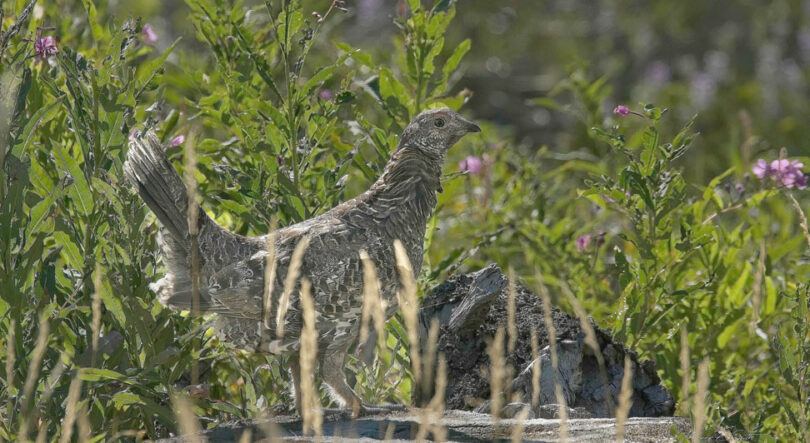Doves and waterfowl account for most of the shotgun shells burned by Colorado small-game hunters, but the dusky grouse is not without its share of fans. Formerly known as blue grouse and sometimes called “fool hens,” these large birds are a gastronomic delight for those who take them in the early season while they’re feeding on grasshoppers, whortleberry, chokecherries, and mast crops.
They typically winter in high-country stands of Douglas fir and lodgepole pine but migrate downhill to breed in spring. Often, they’re found in subalpine meadows and creek bottoms adjoining the aspen-sagebrush interface throughout the summer and early fall. The males tend to migrate back uphill ahead of the females who remain behind to raise the chicks until their biological clocks urge them back to the high country.
Duskies are gregarious birds, and where you find one, you’ll usually find more. In fact, it’s possible to hunt all day and not flush a single bird, only to bust several family groups one after the other in some mysteriously attractive spot known only to these elusive birds.
My son and I experienced exactly such a phenomenon many years ago in the Poudre River drainage. We were new to Colorado and on our first hunt for “blues,” as they were called back then. We began scouting a network of old forest service roads somewhere south of the Red Feather Lakes region, following a tip from an old timer. “Find some little cricks in the high country where the sagebrush and quakies meet, put down lots of shoe leather, and you’ll find the birds … eventually,” he told us. We’d ride a few miles on our four-wheeler, hunt some likely looking terrain on foot for an hour or two, return to the quad, and lurch on to the next spot, over and over again for most of the day without having flushed a single grouse.
We were beginning to suspect we’d been made the butt of some silly old timer’s prank when we suddenly jumped a flock of nearly 30. Some flushed wildly at first, and we took three on the wing with our shotguns but then noticed the rest of them just sat on nearby rocks and tree branches, looking at us like a bunch of fools. That’s when we realized where they’d gotten their nickname from. We also realized we could take them with our .22 handguns, and we quickly collected a limit of the chunky birds.
It’s been years since we’ve hunted dusky grouse intentionally, but we always seem to come across a few during our deer or elk hunts. Occasionally, we’ll pot one or two, bring them back to camp and sauté them in hot butter or bacon fat. They taste just like — well, grouse.
Dennis Smith is a freelance outdoors writer and photographer whose work appears nationally. He lives in Loveland.

